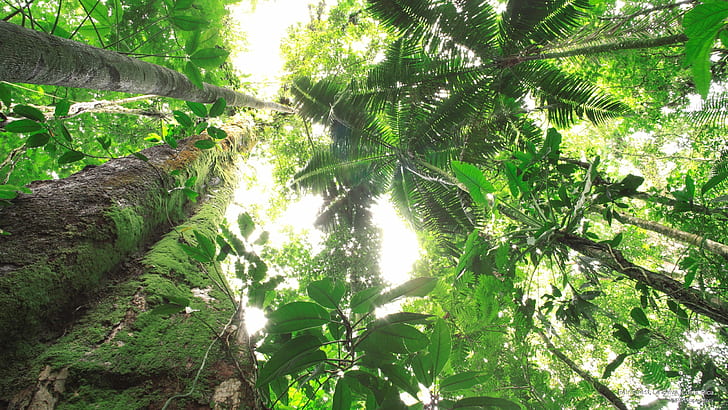Charles Rennie Mackintosh observed that, “Art is the flower, Life is the Green Leaf,” but I would very humbly add that after the green leaf dies, all those red, orange, and yellow leaves become nature’s most magnificent work of art.
For the past two weeks I’ve enjoyed autumn’s splendor, from the yellow aspens of Grand Teton National Park to the red maples of Utah, and yet nowhere have the leaves been more spectacular than right now, in Great Smoky Mountains National Park.
The real wonder of travel is that it makes us ask questions we’ve never really considered. After years of raking leaves, it took me traveling to Tennessee to really ask why leaves change color.
I guess I always knew the basics, but never considered the real science behind the art. Luckily, I had a chance to chat with Great Smoky Mountains National Park’s chief botanist, Janet Rock, who started with the Twitter-sized explanation:
“The chlorophyll—which gives leaves their green color—begins to break down, allowing for the masked pigments to show up.”
That’s fall in a nutshell, though Janet went on to explain the hypercomplexities of the process, how “It’s all organic chemistry,” which “involves hormones” and that color change varies wildly depending on the right conditions of light and temperature. But perhaps the most fascinating thing I learned is that every leaf color derives from unique pigmentation process. Let’s start with green:
GREEN
Chloroplasts are the organelles inside leaves responsible for photosynthesis, when plants turn light into sugars. The distinct green pigment is called chlorophyll, which literally means “green leaf” in Greek. When a plant is alive and well, the green pigments visually dominate, but underneath that cool green color lies other pigments called . . . carotenoids.
YELLOW & ORANGE
Carotenoids are another kind of pigment that live in the chloroplasts of tree leaves, as well as other plants like carrots, bananas, corn and daffodils. That bright yellow-orange color is always present in the leaf, but only becomes visible when the green chlorophyll begins to die and becomes colorless. Longer and colder nights trigger this process, “erasing” the green and exposing the subtler yellow and orange colors beneath.
RED
Red leaves derive their brilliance from pigments called anthocyanins, which usually only form after the onset of autumn, from sugars inside the cell sap. These are the same red pigments that color cherries, grapes and apple skins, and in leaves, they might appear as red, pink, purple or even dark blue. While warm, sunny days increases sugar production (more red), autumn’s cold nights close up the leaf’s vein structure, preventing the red color from flowing back out or spreading across the leaf. That’s why vein patterns are highly visible or colored differently in red leaves.
BROWN
One more color comes into play in fall—and that is brown. After leaf cells die and break down, the natural process of decomposition takes over, producing bitter chemical compounds known as tannins. Oak leaves are rich in tannin, as are tea leaves and grape leaves (hence high concentration of tannins in tea and red wine). A cold, wet, and overcast fall speeds up the tree leaves’ decomposition process, causing the less glamorous brown foliage.
BEST CONDITIONS
So, just what are the ideal conditions for strong leaf color? “Sunny warm days, cool nights and overall dry conditions,” explains Janet. Good daylight heightens sugar production, turning the forest a bright red, while the long, cool nights draw the colors out longer. Bad weather speeds up senescence, or the enzymatic process leading to leaf death and its ultimate fall from the tree.
“During autumn, there’s a layer of cells being produced at the petiole—the leaf stem. These form a barrier that once completed, will separate the leaf from the twig and let it break away and fall to the ground.”
And yet, for all of our scientific knowledge about leaves and their changing color, it’s very difficult to make solid predictions about foliage (though some try).
“We’re about two weeks behind normal, right now,” says Janet, pointing out that much of the national park is still a faded green, “We haven’t had that full onset yet.”
Regardless, she still considers Great Smoky Mountains National Park the ultimate no-fail destination for observing fall color.
“There’s always a good place to see colors in the park—we have so many elevations and tree species and such a complex topography, there will always be somewhere to see color.”
And Janet’s right—you can’t go wrong in Great Smoky. I arrived in the valley of Gatlinburg, Tennessee only seeing green, but once I got up a little higher in the park, the hillsides turned into beautiful painted splotches of yellow, orange, and red.





